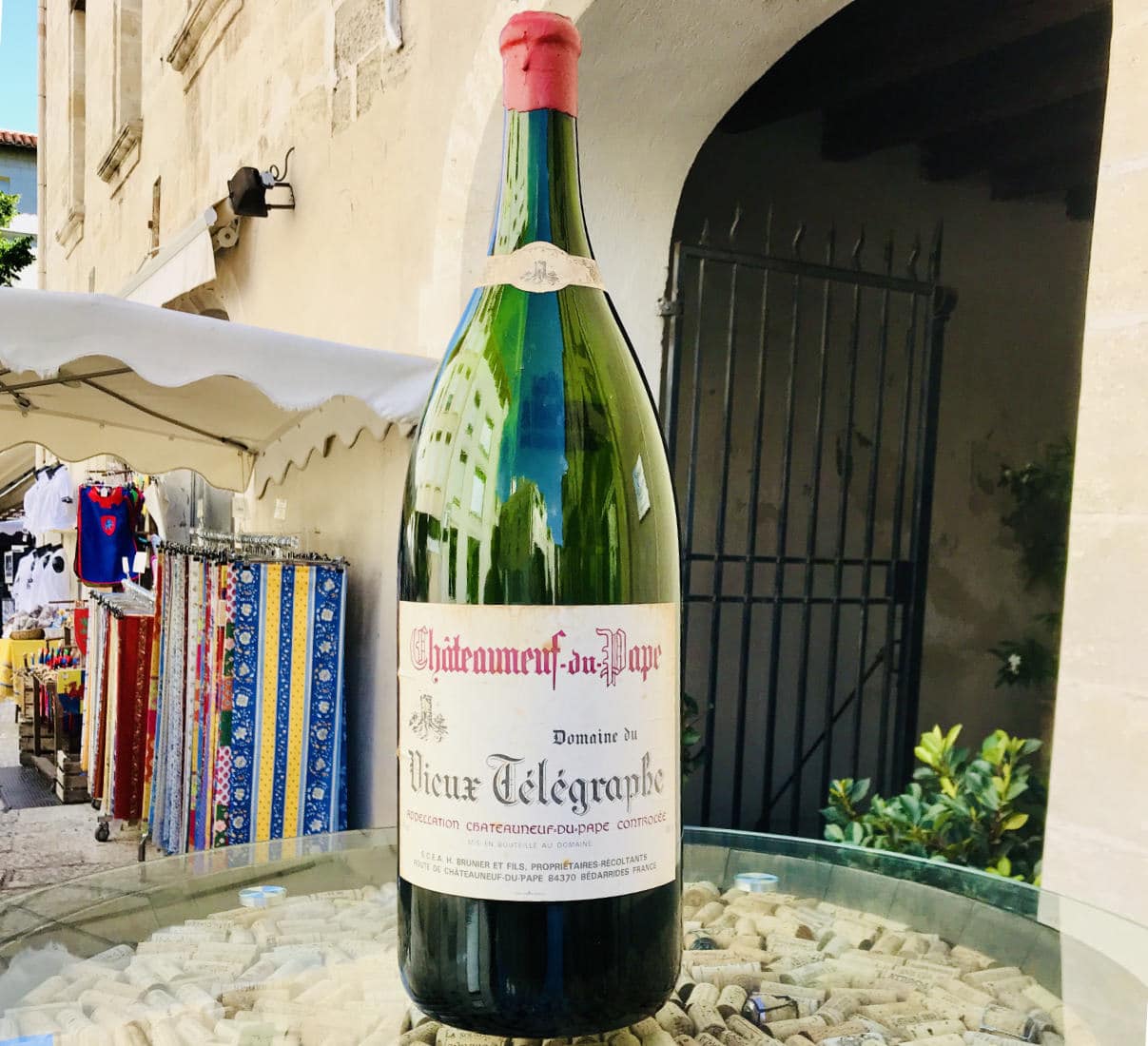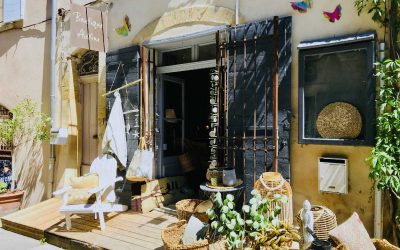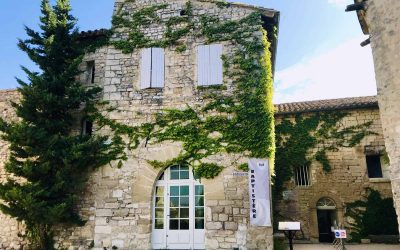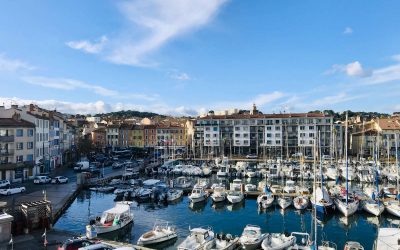If you are planning a visit to Provence and you enjoy a good bottle of red wine, you have to make a stop at Châteauneuf-du-Pape. One of the most famous wine-growing areas in France, its vineyards that stretch into the surrounding villages, countryside, and foothills of the Vaucluse Mountains.
To the south lies Avignon, a bustling town with a history that dates back back to the 6th century B.C. Châteauneuf-du-Pape is about 1.5 hours away from Marseille, which at the time was a major port city to the Greeks and Romans and a gateway into Western Europe. Those early invaders loved wine, and the area around the Rhône river was perfect for vineyards.
But it really became famous when French King Philippe le Bel (Philip the beautiful) in 1309 “convinced” the Catholic popes that they should reside in Avignon, instead of in Rome.
At the time, Avignon was part of the Kingdom of Arles, and the Holy Roman Empire, not France. It was, however, much closer to Philippe than the Vatican was, and easier for him to control.
Known as the Avignon papacy, 7 popes resided in Avignon for a period of 73 years, building castles and fortresses and bringing much wealth in the area. You can read more about French history here.
And it was these Popes who established the famous Châteauneuf-du-Pape, with the name translating to “New Castle of the Pope.” Along with building a castle, the monks in the area took up growing their own wine with papal approval, making it one of the French wines that is known worldwide today.
The Catholic Papacy eventually moved back to Rome, but the wine and the village remain renowned, and one of the most visited sites in Provence. So let’s see what there is to see and experience in the area, shall we? Allons-y!
Things to do in Châteauneuf-du-Pape
The Wine
If you are coming to Châteauneuf-du-Pape, a visit to a local vinery is a must. The lush hillside landscapes with its terraced vineyards produces some of the most famous wines in the world.
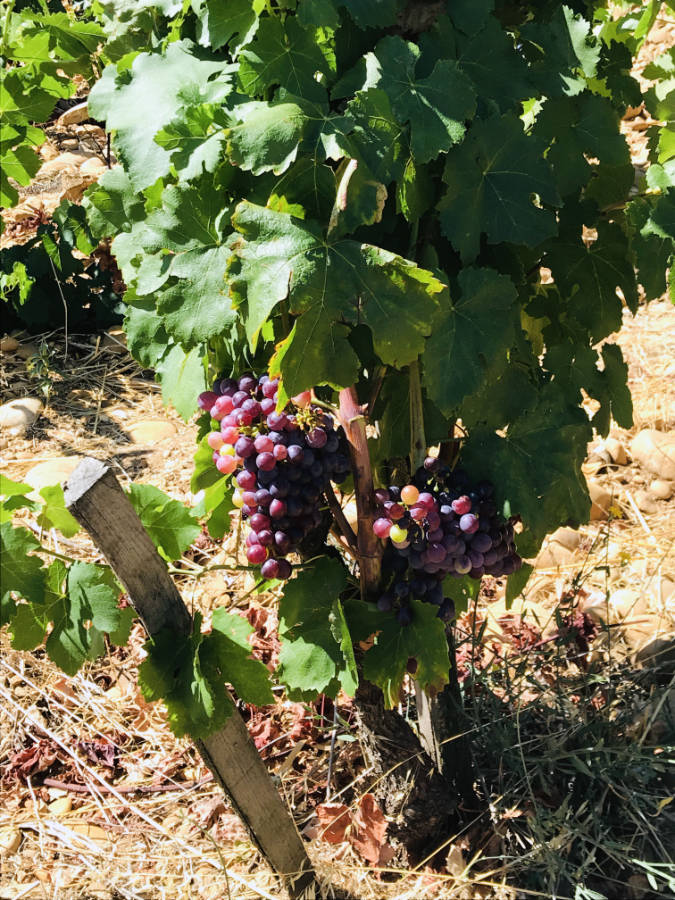
The wines are usually red (though there are some white wines) and sold in dark bottles with a papal stamp on them.
The wine, which can only be produced in this region, is made from up to 90% Grenache, Syrah and Mourvèdre, and up to 10% other varieties allowed by the AOC. The wines produced here are famous for their strong character and ability to age. They are usually earthy and tannic, with a hint of spiciness as they age.
There are much fewer white wines in this region, but there are a few. They are usually in variety of aromas including almond, anise, fennel, and peach.
Other popular wine labels in the region are Luberon, Uzès, Ventoux, and more. You can read more about Côtes du Rhone wines and purchase a bottle of Châteauneuf-du-Pape wine here.
Many of the vineyards have showcase centers in town offering wine tastings. I recommend booking a tour from Avignon, if you do want to have a tasting however, as spots fill up fast especially in the summer months.
The Castle
Perched atop the village, you will notice a ruined medieval castle. It was built in the 14th century for Pope John XXII, the second of the popes to reside in Avignon, as a type of “vacation residence”.
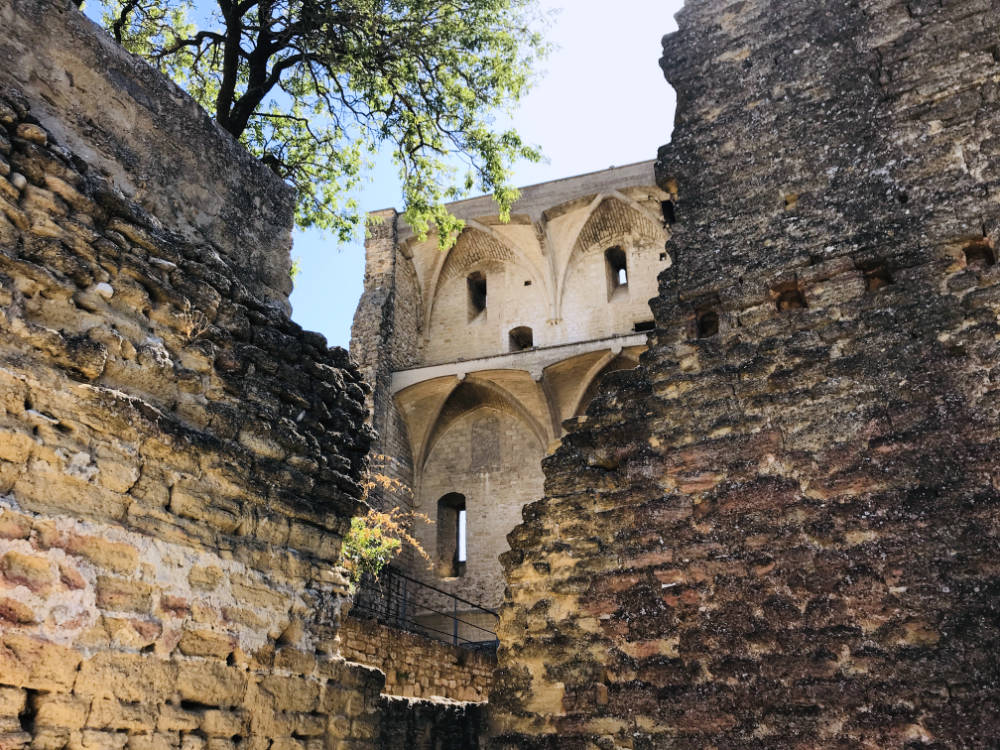
The castle fell into disrepair after the popes returned to Rome. During WWII, German soldiers attempted to demolish the remaining buildings with for fear of letting the strategic highpoint fall into the hands of French Resistance and the Allies.
However, they only managed to demolish the northern part, leaving the southern part standing. Today, you can walk through the remains of the castle for free and admire the views of the village below.
There is a large parking next to the castle, as well as one of the local vineyards. You can leave your car near the castle, and walk down to the narrow pathways into the village. (You will have to walk back up though!)
The Village
Right below the castle, is a series of pathways taking into the village. This is small town Provence at its height.

There are a handful of lovely cafés in the area serving local fare, as well as a small wine museum. As I mentioned earlier, you can also find wine showcases like the Vignoble Maynard, which offers wine-tastings.
Note, if you are visiting in the summer, bring a hat and refreshments. It gets quite hot in the summer and air-conditioning is rare in France.
How to get to Châteauneuf-du-Pape?
Châteauneuf-du-Pape is about 10 miles (16km) away from Avignon. There are public busses (the 2S2) that goes between Avignon and the village, but I would recommend renting a car for convenience.

Busses don’t run often on weekends and holidays, and there is usually a long time in between busses.You can also take a tour from Avignon to Châteauneuf du Pape, to take you there in style.
How many days should you spend?
The village itself is quite small, so one day is likely enough to spend in Châteauneuf-du-Pape. The town is also around 40 minutes away from the famous Fontaine de Vaucluse, so do save some time for that as well your trip to this part of Provence.
Where should you stay?
I recommend staying in nearby Avignon or if you prefer the small town feel, in Isle-sur-la-Sorgue.
In Avignon:
- €€€ – Kyriad Avignon – Palais des Papes
- €€€€ – Hôtel de l’Horloge
In Isle-sur-la-Sorgue:
- €€€ – Hotel Les Nevons
- €€€€ – Grand Hôtel Henri – Les Collectionneurs
- €€€€€ – La Maison sur la Sorgue – Esprit de France

If you enjoyed that post, you may want to read more about traveling around Provence and the French Riviera. A bientôt!
